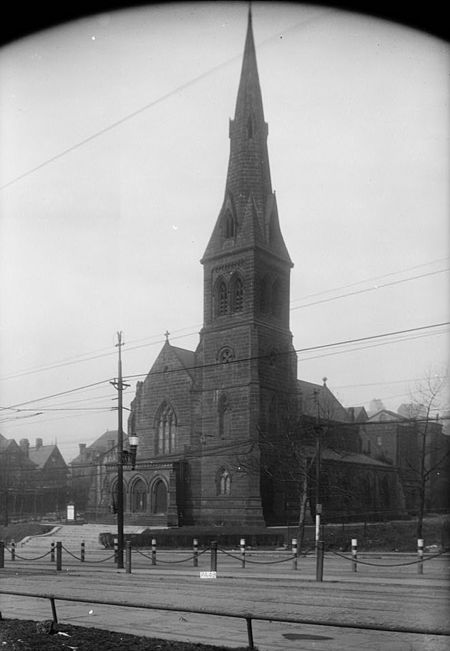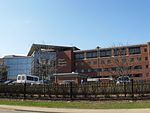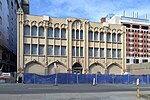St. Peter's Episcopal Church (Pittsburgh)

St. Peter's Episcopal Church in Pittsburgh, Pennsylvania, was an early example of the archaeological phase of Gothic Revival architecture, designed by the Philadelphia architect John Notman. It was originally built in 1851 at the corner of Grant and Diamond as a chapel of ease for Trinity Episcopal Church in the Diocese of Pittsburgh. The church and its site were purchased by Henry Clay Frick. The building itself was donated back to the congregation. It was dismantled, the stones numbered, and taken up Forbes Avenue in horsedrawn wagons to the corner of Forbes Avenue and Craft, where it was reconstructed in 1901. It received a plaque from the Pittsburgh History and Landmarks Foundation. The church was deconsecrated in September 1989, and the building was demolished.
Excerpt from the Wikipedia article St. Peter's Episcopal Church (Pittsburgh) (License: CC BY-SA 3.0, Authors, Images).St. Peter's Episcopal Church (Pittsburgh)
Fifth Avenue, Pittsburgh
Geographical coordinates (GPS) Address Website Nearby Places Show on map
Geographical coordinates (GPS)
| Latitude | Longitude |
|---|---|
| N 40.437361111111 ° | E -79.963055555556 ° |
Address
Carlow University
Fifth Avenue 3333
15213 Pittsburgh
Pennsylvania, United States
Open on Google Maps





